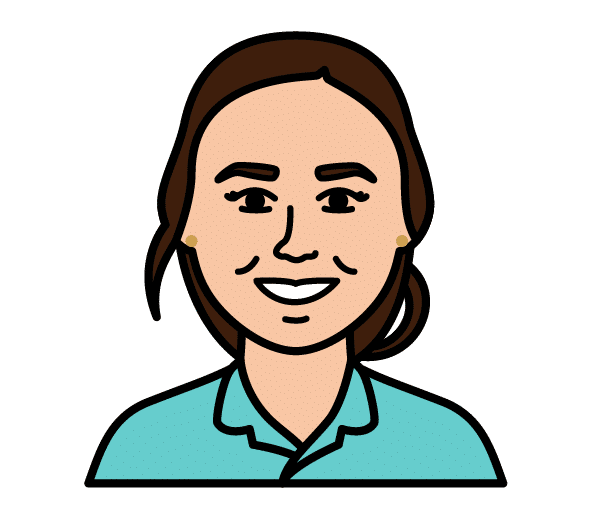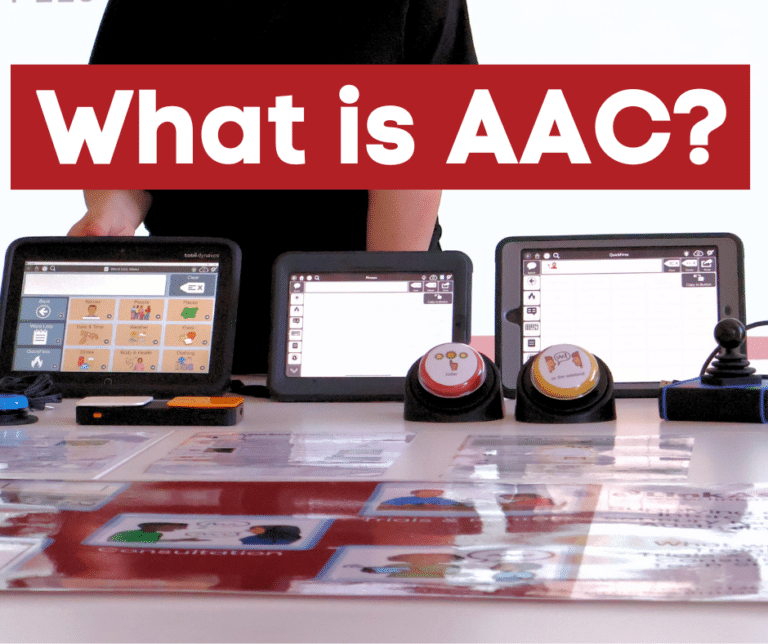
Low-tech AAC (also known as light-tech, lite-tech or paper-based AAC) refers to communication tools or systems that do not rely on complex electronics or digital technology. They are typically multi-page communication books with tabs for navigation, or single-page communication boards.
Low-tech AAC is different from supports such as visual schedules, routine strips or choice boards. With low-tech AAC, the main intention is communication, whereas with other visual supports, the main intention is something else. For example, a visual schedule may offer predictability and reduce uncertainty, a routine strip might help someone learn a new skill or be more independent in carrying out an activity, and a choice board can help someone consider their options and communicate their preferences in a specific situation (don’t forget to include a ‘something else’ option!)
Low-tech AAC can be someone’s main communication system, such as a Pragmatic Orgnaisation Dynamic Display (PODD), which has enough language to allow a user to communicate any message that they think of. Other times, low-tech AAC is a strategy for introducing AAC, such as teaching communication partners to model using an Aided Language Display (ALD) or core word board.
Regardless of whether a person has a high-tech communication device, it is a good idea to have a low-tech tool on hand. Here are some reasons why a high-tech AAC user might also have a low-tech AAC tool:
- Access to AAC in environments where a high-tech device may get damaged, e.g., bathroom or swimming pool.
- Access to AAC during messy activities, e.g., sand play.
- Access to AAC when the high-tech device is being repaired.
- Access to AAC when the high-tech device is out of battery and can’t be recharged, e.g., during a power outage.
- Access to AAC on the move, or when it’s unsafe to carry a heavy device, e.g., play equipment or in the car.
- A way for communication partners to model use of symbolic language without touching the person’s AAC device when there isn’t consent.
- A way for communication partners to model use of symbolic language while the person is still developing their access skills (e.g., eye gaze or switch scanning). Watch this YouTube clip from We Speak PODD for an example of modelling low-tech PODD while using an eye gaze device.
When it comes to TD Snap, there are already some low-tech options available:
- TD Snap Core First Communication Books (FREE)
- TD Snap Core First core word board (FREE)
- TD Snap Motor Plan core word board (FREE)
- Paper-based PODD books (e.g., if using the TD Snap PODD page set)
- AAC School Kit
You can also print pages from any TD Snap page set, to create your own communication books and boards with a person’s individualised vocabulary. See instructions for printing here. The low-tech and high-tech AAC systems may not be exactly the same and it’s important to acknowledge that the user will need different skills for each system. Navigating a touch device is very different to turning the pages of a communication book, for example.
Don’t forget!
Low-tech AAC is not just for users with touch access skills. Check out these partner-assisted scanning and E-Tran ALS Communication Boards, as well as many symbol-based options from Project Core.
Final considerations for implementing low-tech AAC:
- Consider access and durability when deciding on printing materials, e.g., size, covers, binding type, matte VS gloss laminate. The PicSeePal is a lightweight, portable, customisable and splash proof housing for paper-based AAC.
- Plan to review and update the low-tech AAC, e.g., adding new important vocabulary.
- Remember training! Depending on the type of low-tech AAC, users and their communication partners will need to learn a range of skills to successfully implement the low-tech AAC. There are even more skills to learn for partner-assisted scanning and E-Tran boards!
- Involve the person and their team in the design as their knowledge is critical when deciding what vocabulary to add and what symbols to choose. Think about building capacity so key people have the software and skills to update old low-tech tools and create new ones in the future. Some families may prefer to do some of the printing, laminating and tab cutting themselves.
- Designing, developing and implementing low-tech AAC takes time, and the materials can be costly. If you are planning on including low-tech AAC in your communication toolkit, consider the hours and consumables that you will need.
By embracing a combination of both low-tech and high-tech AAC, individuals can ensure they have a comprehensive communication system that meets their needs in a variety of environments.



